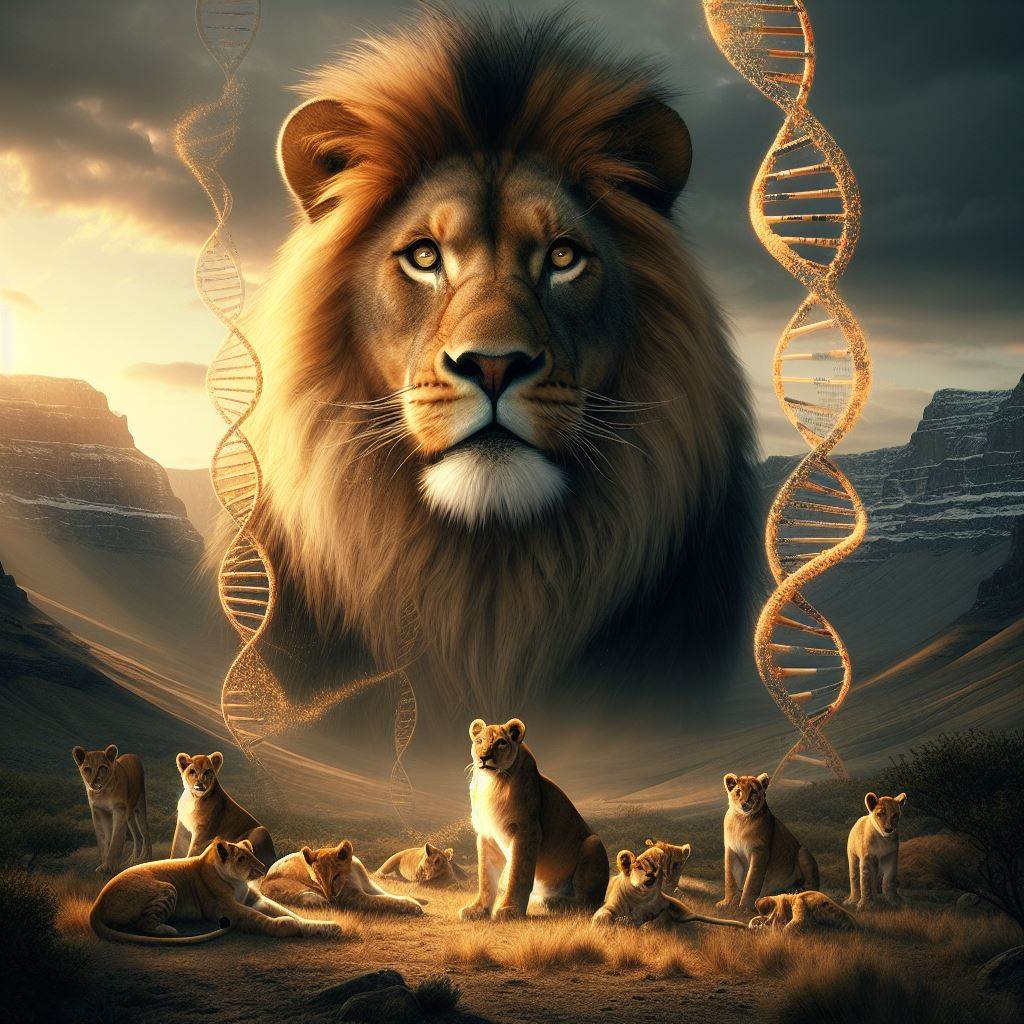The Cape lion, once a majestic predator ruling the African savannas, met a tragic end at the hands of European hunters within a mere two centuries of their arrival. But could their legacy still live on within the genes of their distant relatives, hidden in plain sight?
To unravel this mystery, scientists from the University of Illinois Urbana-Champaign embarked on a journey into the past using the power of genomics. Their mission: to determine if the Cape lion was truly a unique subspecies lost to history.

What they discovered defied expectations. While endangered species typically suffer from genetic diversity loss as they near extinction, the Cape lion displayed a surprising resilience.
Historical accounts of Cape lions vary, with European naturalists focusing on their black manes as a defining feature. However, indigenous narratives tell of lions with a range of mane colors, challenging the notion of a uniform appearance.
The researchers focused their efforts on two remarkably preserved Cape lion skulls housed at the Field Museum, dating back to the 1800s. Unlike other specimens, these skulls had a well-documented history and collection location, providing a crucial link to the past.
Extracting DNA from these skulls, the team compared it to genetic data from lions across Africa. What they found was remarkable: despite coming from the same region, the skulls exhibited different DNA lineages and nuclear genomes, indicating a once-diverse lion population in the Cape region.
Even more surprising was the absence of typical signs of inbreeding or genetic diversity loss, commonly observed in endangered populations. This suggests that Cape lions were hunted to extinction so rapidly that their genomes didn’t have time to reflect the effects of long-term population decline.
This groundbreaking study challenges old perceptions of Cape lions based on colonial descriptions, highlighting the importance of incorporating diverse perspectives into scientific research.
The extinction of the Cape lion serves as a sobering reminder of how swiftly a robust population can disappear. It underscores the critical role of genetic diversity in species survival and emphasizes the urgent need for conservation efforts to protect endangered species and their habitats.
In light of this, there are several ways individuals can support lion conservation efforts:
- Adopt a Lion: Many conservation organizations offer symbolic adoption programs to fund research, anti-poaching efforts, and habitat restoration.
- Support Local: Choose products from companies backing lion conservation to drive change and support communities living alongside these majestic creatures.
- Become a Citizen Scientist: Participate in wildlife monitoring programs to track lion movements, monitor populations, and identify threats.
- Educate and Advocate: Raise awareness about the challenges facing lions and advocate for policy changes to protect critical habitats.
- Volunteer: Offer your time to conservation projects or zoos involved in wildlife preservation and education.
By actively engaging in conservation efforts, individuals can help ensure that lions and other endangered species thrive in the wild. Together, we can learn from the lessons of the Cape lion and secure a brighter future for all species on our planet.
- “Unraveling the Genetic Legacy of the Cape Lion: Surprising Findings Shed Light on Extinction Mystery”
- “New Study Challenges Colonial Perceptions of Cape Lions: Genomic Analysis Reveals Diverse Population”
- “Lessons from Extinction: Cape Lions’ Rapid Decline Highlights Importance of Genetic Diversity”
- “Supporting Lion Conservation: How Individuals Can Make a Difference in Preserving Endangered Species”
- “From Extinction to Action: Insights from Cape Lions Inspire Conservation Efforts Worldwide”

